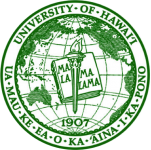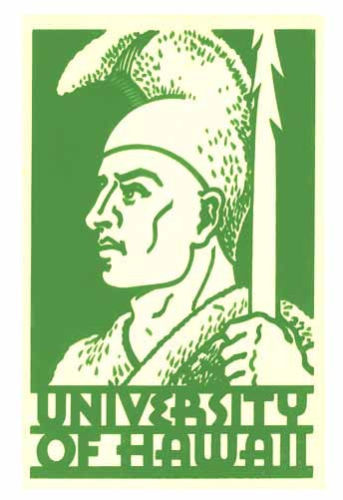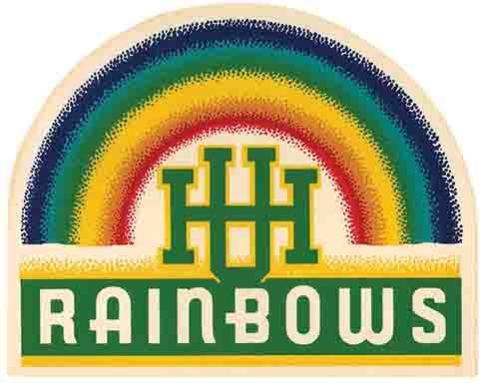University of Hawaii system
Each institution in the system uses different athletic colors but the same academic hood lining pattern from the original University of Hawaii:
University of Hawaii at Manoa
Hawaii
1907




To avoid assigning duplicate hood linings to colleges and universities that used the same school colors, the Intercollegiate Bureau of Academic Costume (IBAC) used different types of heraldic patterns to divide the two or more colors in an academic hood. One of the heraldic divisions the Bureau often employed was a “double chevron”. The typical width of a normal chevron was between three and four inches, but the double chevron pattern used two chevrons of about 1½ inches in width placed approximately two inches apart so that the color of the hood lining showed between them.
Because Stetson University had already been assigned a green hood lining with a white chevron, in the 1910s or 1920s the IBAC assigned the College of Hawaii a green hood lining with two white chevrons, according to IBAC lists from 1927 and 1948. Possibly because lighter and brighter colors were popular in American culture during the 1950s and 1960s, the Bureau modified the shade of Hawaii’s green hood lining to “emerald green” with two white chevrons during that period, as seen in lists compiled by Kevin Sheard in Academic Heraldry in America (1962) and Academic Dress and Insignia of the World (1970), as well as a 1969 IBAC list. An Intercollegiate Bureau list from 1972 reverted to the original “green” (medium or “true” green) lining.


When classes started at the College of Agriculture and Mechanic Arts in Honolulu in 1908, some of the wives of the professors began decorating the social event venues on campus and found that although white decorative materials were readily available, it was going to take many weeks or months to ship colored ribbons and paper from the mainland to the Hawaiian islands. So the ladies began to decorate with native plants, festooned with white ribbons. The color scheme proved to be so popular that green and white became the official school colors of the college.
Later the colors were given symbolic meanings appropriate for an agricultural and mechanical college. Green was the color associated with Lono, the ancient Hawaiian god of agriculture, and represents the lush tropical fertility of the Hawaiian islands, spiritual fulfillment, success, and prosperity. White was used by Hawaiian kings and queens because it was a color traditionally associated with perfection, exemplary virtue, and the extraordinary.
Citations in the World Almanac (listed by cover date; color information is from the previous year): green/white (1923-1935)
